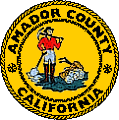
Für eine deutsche Übersetzung dieser Seite einfach die Brandenburger Flagge anklicken
 |
Click the Brandenburg Flag for a German translation Für eine deutsche Übersetzung dieser Seite einfach die Brandenburger Flagge anklicken |


 |
Road Trips May 2008 & 2009Carson Scenic Byway
|
 |


 |
Click the left turn sign to get back to the start page or the U-turn sign to get back to the road trips page. |

|

 California's State Route 88 is one of our favorite ways to get across the Sierra Nevada. From an ancient Indian trading road, the Carson Route has evolved over generations to meet the need of travelers and is today one of the nation's celebrated Scenic Byways. |

 |
Here is a brief history of Carson Pass Scenic Byway In 1844, John C. Fremont and Kit Carson followed the old Indian route over a path that is now named after Kit Carson. The five-month journey, made with 25 men, was a success, and Fremont's report was published by the U.S. Congress. It touched off a wave of wagon caravans filled with hopeful emigrants heading west. As part of the California Trail, the route over Carson Pass became the most heavily used Sierra crossing for farmers and gold-seekers to reach the gold fields and farm homesteads in California. It has been estimated that between 1844 and 1860 a quarter million people made the journey along this road. A migration in the opposite direction started in 1862 when silver was discovered in Comstock Lodge, Nevada, leading to the construction of a formal road, called the Amador-Carson Valley Wagon Road. With the advent of the automobile in 1911, the old wagon road was replaced by the Alpine State Highway. The narrow, windy road accommodated animals, wagons, and the first slow moving cars. After a road widening project in the 1930s, the road was improved again in 1958, following the construction of Lower Bear Reservoir. With the establishment of winter recreation areas and the road now being available for modern cars, more and more people came to visit this beautiful area. The marker to the left, erected by the Native Daughters of the Golden West is a monument to the people who literally "paved the way." It is located near Pioneer at the beginning of the Scenic Byway. The stories of the pioneers are stories of heroism and stories of human sacrifice. Three grave sites along the road tell the story of the pioneer days better than we could tell it. |

Tragedy Spring |
 Tragedy Spring Monument, erected by the Daughters of Utah Pioneers
Tragedy Spring Monument, erected by the Daughters of Utah Pioneers
|
 SHL Marker
SHL Marker |
In the 1840s and 50s, this little spring along the old emigrants trail was a traditional resting place for California Settlers. It was named for an incident on June 27, 1848, when three scouts were murdered here by unknown people. The three men were former members of the Captain Davis's Company A of the Mormon Battalion. They were the first people to open a wagon road over the southern route from California to Utah in 1848. Their comrades carved their names in a tree nearby at the trail. That part of the tree is now preserved in Fort Sutter in Sacramento. The State of California declared the location a Historic Landmark and erected a Historic Marker (left) at the location of the tree. In addition, the Daughters of Utah Pioneers built a monument in honor of the three scouts right next to the spring picture above). |
 DUP Marker
DUP Marker |
 The original Spring
The original Spring |
 The spring is right next to the monument
The spring is right next to the monument
|

One of the members of the wagon train noted the following in his diary:
 "We cut the following inscription in the Balsam Fir that stood near the grave. To the memory of Daniel Browett, Ezrah H. Allen, and Henderson Cox, who were supposed to have been murdered and buried by Indians on the night of June 27, A.D., 1848. We call the place Tragedy Spring."  You can read more about it at Traveling the Mormon Trail. |

|

 |
 |

|
|
USDA El Dorado National Forest and the Sacramento Chapter of
Daughters of Utah Pioneers joined forces and built a picnic
area at the spring. Unfortunately, it was too early in the year for a picnic.
|

 |
 |

|
| It turned out we weren't really prepared for a hike either. |


The Maiden's Grave
|
 Maiden's Grave, erected by Steven Ferrari
Maiden's Grave, erected by Steven Ferrari
|


 Headstone for "Rechall Melton"
Headstone for "Rechall Melton" |
 The grave site along the Emigrant Trail
The grave site along the Emigrant Trail
|

 "Wrong" CHL Marker
"Wrong" CHL Marker |
 Plaque explaining the whole story
Plaque explaining the whole story |
 Headstone for Allen Melton
Headstone for Allen Melton
|


 Back to Road Trip May 2009 |
 Back to Road Trips Main Page |
 Back to English Main Page |
 Back to Start Page |